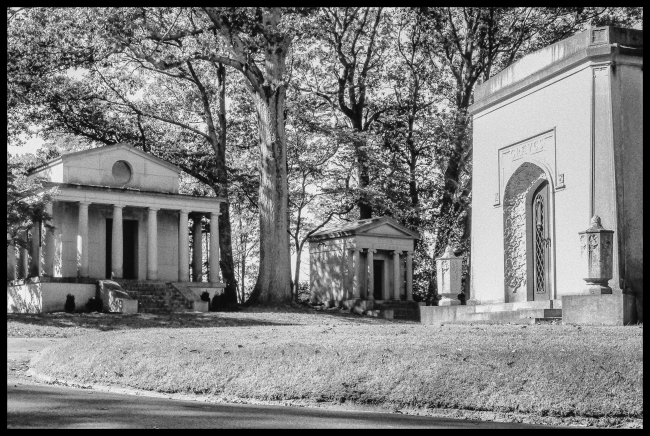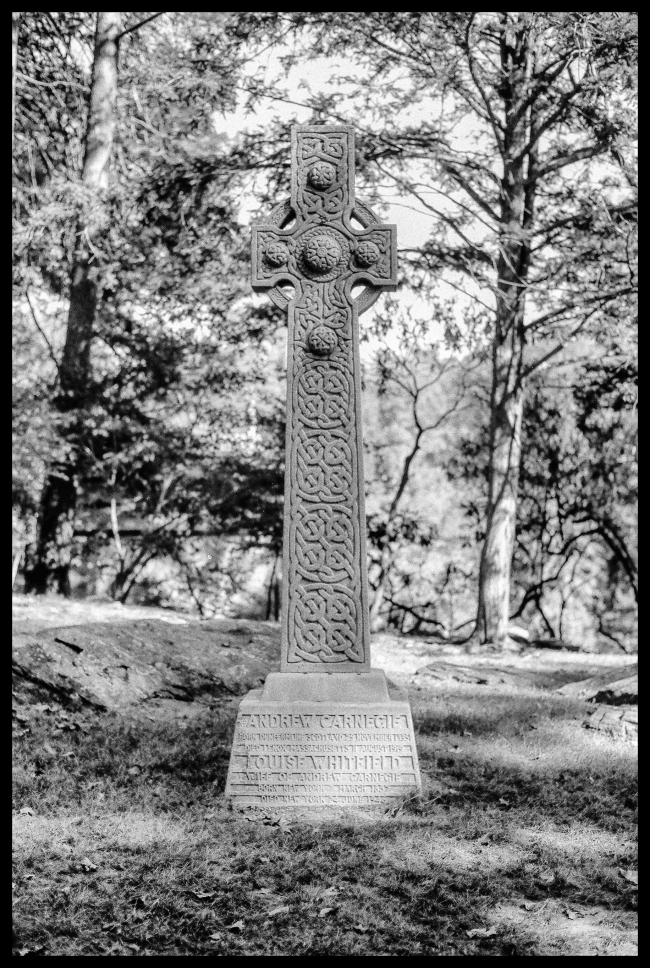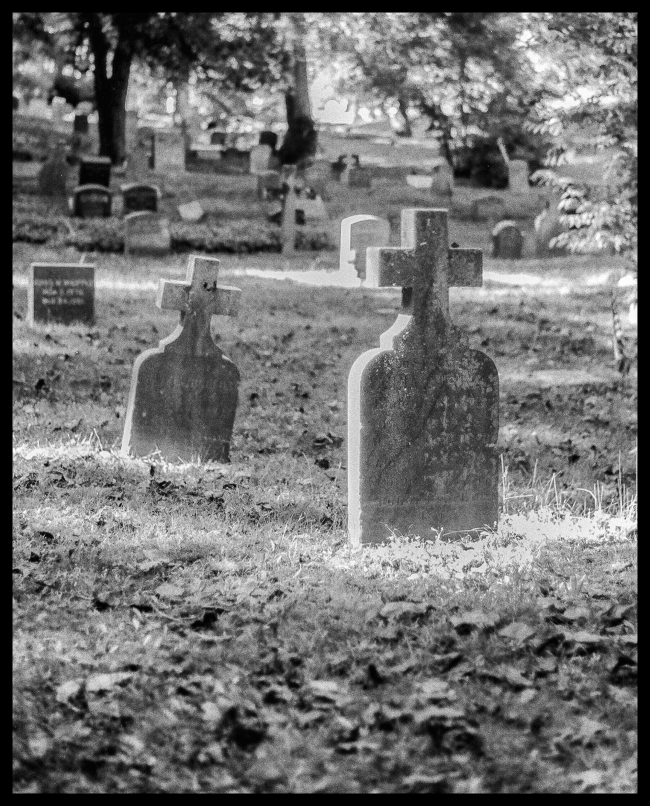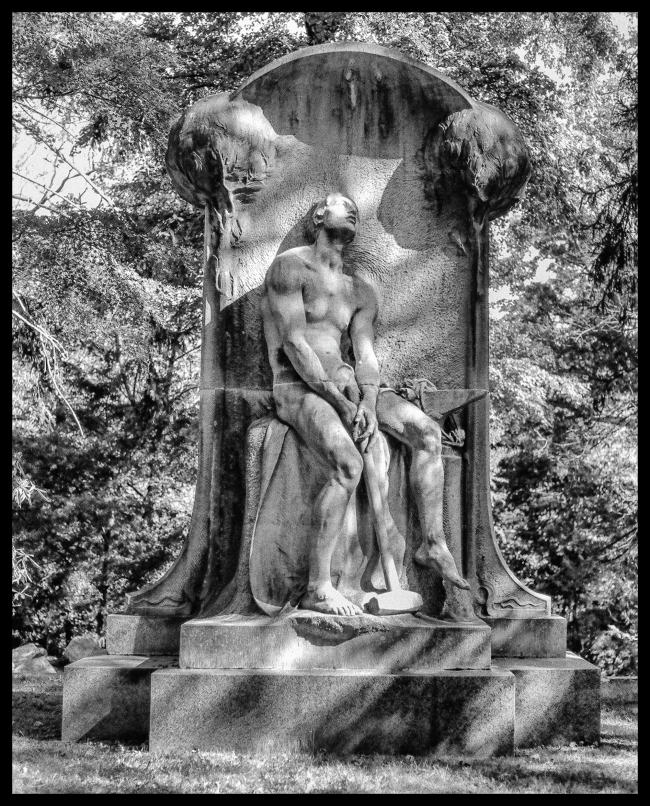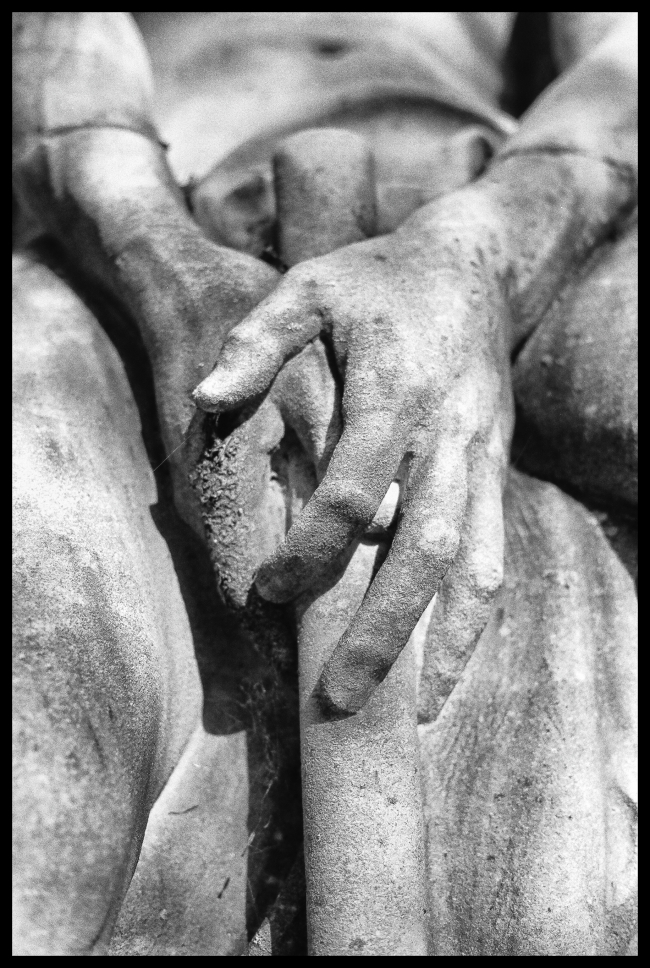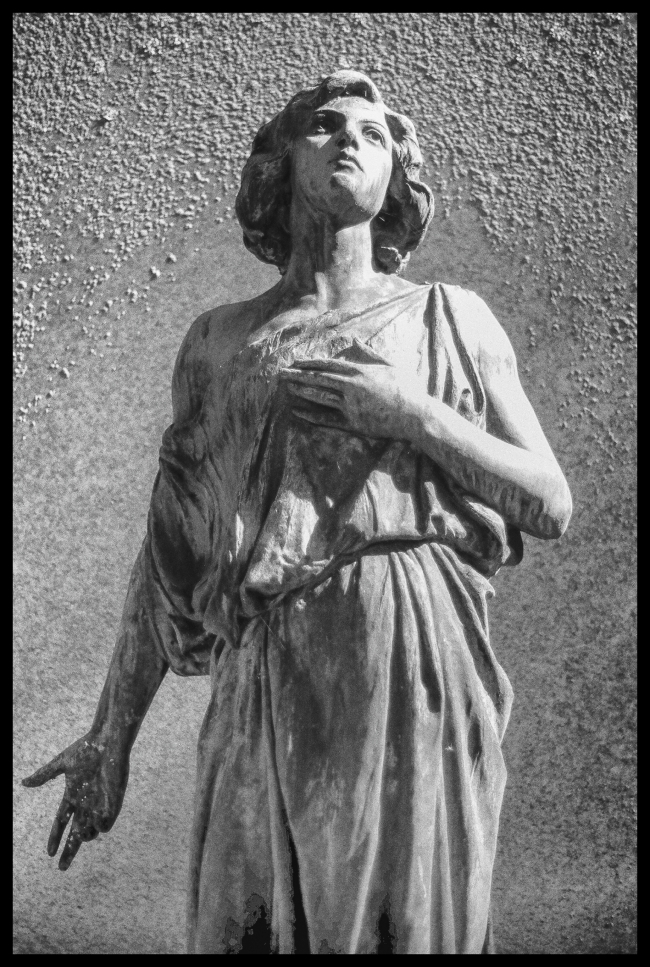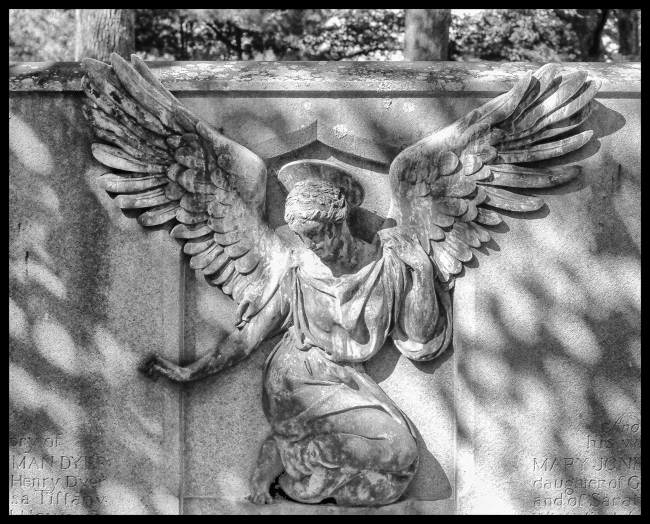It took me a while to get around to using my August film camera. I had a bunch of old, color film that I wanted to use up so when trying out new/old cameras I’ve tended to use this first, and then convert the scanned images to black and white. I’ve now used up most of this old stock, so in this case I used true black and white film, specifically Kodak TX 100.
Suddenly I found I was very busy and had trouble thinking of a venue to try out the camera. I kept taking the camera with me, but time went by and I was getting more and more frustrated at not using it. Eventually I decided that I’d return to nearby Sleepy Hollow Cemetery, where I can usually find something worth photographing.
I have my film processed at The Darkroom and co-incidentally the resulting scans were made available to me on Hallowe’en. I say ‘co-incidentally’ because, in case you don’t already know, Sleepy Hollow Cemetery is pretty much “Ground Zero” for Hallowe’en in the US. The stomping grounds of the headless horseman, it’s also the final resting place of Washington Irving, the author of “The Legend of Sleepy Hollow“.
I must say that I loved using this camera. It’s small and fairly light for an SLR from that period and everything just felt right. One of the problems with only using a camera once is that you don’t really become familiar with it. This is particularly true with the OM2-n because of the unique arrangement of the controls i.e. they’re all on the lens, including the depth of field preview button. At first I was was groping around a bit to find the appropriate dial/button, but as I got used to it I began to appreciate how useful it is to have all of these controls (i.e. aperture, shutter, focus, depth of field) all in one location. I appreciated the large, bright finder typical of most film SLRs and which you no longer find on current DSLRs. The innovative (for the time) metering worked pretty well even if in a couple of cases (in particularly contrasty conditions) it did tend to overexpose highlights (this is probably a result of my lack of experience in using the camera rather than a problem with the camera itself). The 50mm f1.8 F-Zuiko auto-s that I was using focused smoothly and produced sharp results.
I like to shoot in aperture priority so this was perfect for me. Select the appropriate aperture and the display in the viewfinder shows you what shutter speed will be chosen.
The design of the camera reflects a belief in simplicity: just what you need – no more, no less. It was refreshing to use a camera that just gets out of the way and lets you focus on what you need to do while still providing you with the required feedback. This has been my problem with the compact point and shoot cameras I’ve been using of late. Although they get out of the way and let you focus on composition, they just don’t provide the information you need to be confident that you are getting the photograph that you want. On the other end of the scale are recent generation DSLRs. I just bought a Sony A77II and I must say that I find the complex functionality a bit bewildering. The OM2-n seems to just about get it all right.
A review of the OM2 on Casual Photophile comments:
All told, the OM-2 is a camera with which I’ve fallen in love. It’s tiny, inconspicuous, quiet, capable, and proud. It’s modern enough to use standard batteries, yet vintage enough to offer analog charms. The OM-2 can do anything we ask of it without breaking our backs or the bank. It just might be a perfect 35mm film camera. Staring at the OM-2 with the most critical eye leads one to stare without result. There’s nothing substantive about which to complain.
I’d very much agree.
This simple celtic cross marks the final resting place of one of the richest people the earth has ever known: Andrew Carnegie.
Tombstones.
Henry Villard Memorial by Karl Bitter.
Detail of the Villard memorial.
William Evarts Benjamin (1859-1940) memorial. A prominent publisher and collector in Boston, Massachusetts.
Lyman Tiffany Dyer memorial. Trooper Squadron A 1896 – 1905. Member of Troop A ( Squadron A ), Volunteer Cavalry, Spanish American War. Participated in the Puerto Rico Campaign. Grandson of George Jones co-founder of the New York Times

